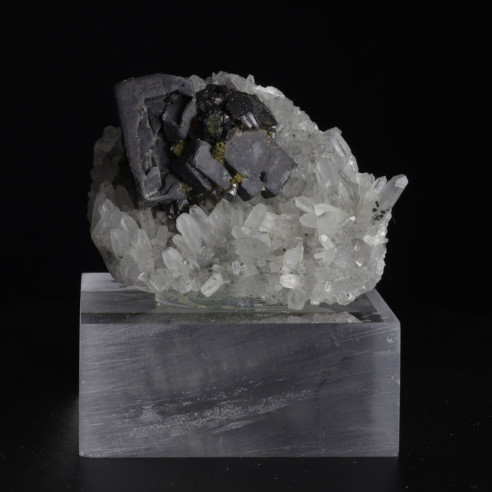Galena in association with blende and chalcopyrite on quartz from the mine of madan in Bulgaria (year 2005).
Stone dimensions: L: 45mm x W: 30mm x H : 35mm.
Weight with base: 120g.
The Madan mine in Bulgaria has a long history dating back to Roman times. It is located in the Smolyan region, in the Rhodope Mountains, in southern Bulgaria.
At the beginning of the 20th century, the Madan mine was one of the most important lead and zinc mines in Europe. It was known for the quality of its ore, which was one of the richest in Europe. Minerals extracted from the mine included mainly galena (lead sulfide), sphalerite (zinc sulfide), chalcopyrite (copper and iron sulfide), as well as other minerals such as pyrite (iron sulfide) and tetrahedrite (sulfide of antimony, copper, lead and silver).
It was exploited by several Bulgarian and foreign mining companies, and experienced a period of strong growth in the 1930s.
However, World War II had a significant impact on mining production at Madan. The mine was damaged during the conflict, and Bulgaria lost access to European markets for its mining products. After the war, the mine was nationalized and continued to operate under Bulgarian state control.
In the 1960s and 1970s, mining production at Madan experienced a new period of growth, thanks to new technologies and increased demand for the metals produced by the mine. At its peak, the mine employed more than 5,000 workers and produced millions of tons of lead, zinc and other metals each year.
However, during the 1980s, the mine's production began to decline due to economic and technical problems. Falling metal prices on world markets also affected the mine's profitability.
In the early 2000s, the mine was privatized and sold to an international consortium, which unfortunately encountered financial difficulties and the mine closed in 2007.
Today, the Madan mine is an important historical and tourist site, which bears witness to the history of the mining industry in Bulgaria and its role in the country's economy.

















